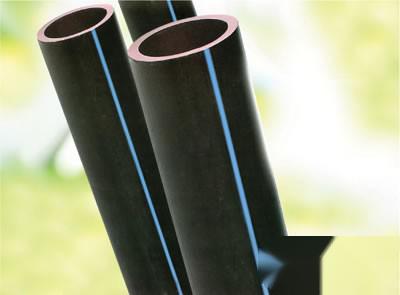HDPE Water Supply Pipe Manufacturer, SanmenxiaPE Pipe
High-Density Polyethylene, abbreviated as “HDPE”. HDPE is a highly crystalline, non-polar thermoplastic resin. The original state of HDPE is milky white, and it appears somewhat translucent in thin sections. PE has excellent resistance to most household and industrial chemicals. Certain types of chemicals can cause chemical corrosion. This polymer is non-hygroscopic and has good water vapor resistance, making it suitable for packaging applications. HDPE exhibits excellent electrical properties, especially high dielectric strength, making it very suitable for wires and cables. Medium to high molecular weight grades have excellent impact resistance, even at room temperature and at low temperatures down to -40F.
φ250PE water supply pipe is a thermoplastic polyolefin generated from ethylene copolymerization. Although HDPE was introduced in 1956, this plastic has not yet reached maturity. This versatile material is continuously being developed for new applications and markets.
PE can be manufactured using a wide range of processing methods, including sheet extrusion, film extrusion, pipe or profile extrusion, blow molding, injection molding, and rotational molding.
HDPE Water Supply Pipe, HDPE Pipe Manufacturer, SanmenxiaPE Pipe
HDPE pipes are replacements for traditional steel pipes and PVC drinking water pipes. HDPE pipes must withstand certain pressures, and it is usually necessary to choose high molecular weight, well-mechanical performance PE resins, such as HDPE resin. LDPE resin has low tensile strength, poor pressure resistance, low rigidity, poor dimensional stability during processing, and difficult connections, making it unsuitable as a material for water supply pressure pipes. However, due to its higher sanitary standards, LDPE, especially LLDPE resin, has become a commonly used material for producing drinking water pipes. LDPE and LLDPE resins have low melt viscosity, good flowability, and are easy to process, thus allowing for a wider selection range of their melt flow index, usually between MI 0.3-3g/10min.
HDPE Pipe Properties, SanmenxiaPE Pipe
Chemical Properties
Polyethylene is resistant to various organic solvents and to many acid-base corrosions, but it is not resistant to oxidative acids, as polyethylene can be oxidized in oxidative environments.
Physical Properties
Polyethylene can be considered transparent in film form, but in bulk form, it becomes opaque due to the strong light scattering caused by the large number of crystals present internally. The degree of crystallinity of polyethylene is influenced by the number of branches; the more branches there are, the harder it is to crystallize. The melting temperature of polyethylene crystals is also affected by the number of branches, ranging from 90 to 130 degrees Celsius, with a lower melting temperature for a higher number of branches. Single crystals of polyethylene can usually be prepared by dissolving high-density polyethylene in an environment above 130 degrees Celsius.
Contact Person: Manager Zhao
Mobile:18623755437
Phone: 0379-60692512
Fax: 0379-65260950
Company Website: www.lygrsjw.com
Email: 874689613@qq.com
Factory Address: Zhejiang Business Industrial Park, Matun Town, Mengjin County, Luoyang City, Henan Province
Welcome to purchase our polyethylene pipes, and we will provide you with excellent product services!













